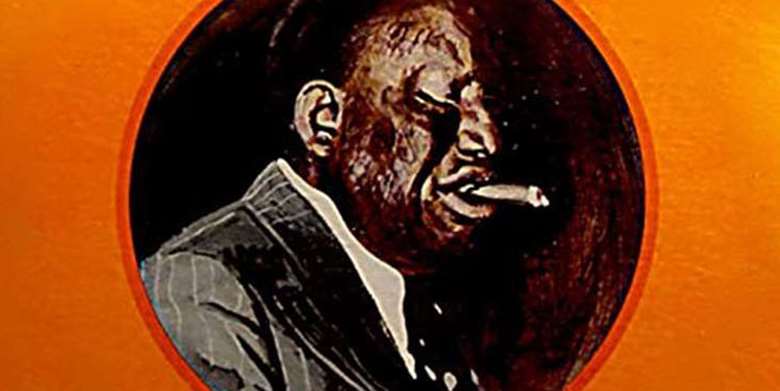The story of jazz: the early years, part 2 (1922-32)
Wednesday, September 18, 2019
From the wild, small-group jazz of Jelly Roll Morton and Bud Freeman to the birth of big bands and the arrival of Duke Ellington

Another genius who came to grief in New York at the end of the 20s was the New Orleans card shark, pool-hall hustler, gambler, pimp and loud-mouth, Jelly Roll Morton.
Only sporadically involved in music (usually when his gambling luck was out), Morton in the mid-20s was based in Chicago. While there he made a string of records for Victor. These sides made with his Red Hot Peppers between 1926-8 are the first truly great ones by a jazz composer/arranger.
Veering crazily between carnival-type hokum (including jokes between group members, billy-goat imitations and worse) and incredible evocations of Louisiana and New Orleans life, Morton managed a string of perfect recordings in classic New Orleans style.
Unfortunately for their creator, he eventually talked his way out of a job in Chicago and lost his way in New York as newer jazz styles emerged in The Depression years. He died in Los Angeles in 1941 a forgotten man.
Not so easily forgotten were the larger bands who were beginning to headline in New York cabarets and clubs, forming a new type of music as their confidence grew.
There was also the competitive, braggadocio world of Harlem stride pianists. These guys meant business in every department
While pianist/composer Fletcher Henderson is often credited with bringing riffs and section team-work to big-band jazz, thereby lead directly to the most basic component of 60s and 70s rock, it was Duke Ellington who ended the decade as the coming band.
Originally an outsider from Washington, the street-wise Ellington clinched the residency at Harlem's Cotton Club in preference to King Oliver in 1927. As Ellington went from strength to strength on the back of prudent Mob connections and a cut-throat personal manager, Oliver was out on the road alone as The Depression struck and out of business by 1932, dying in provincial poverty just 6 years later.
Meanwhile, white leaders such as Paul Whiteman were making jazz popular with the masses by mixing it with light classics, string sections and George Gershwin (in person!).
Not so the young roughnecks from Austin High School outside Chicago, who were developing their own rowdy, effervescent version of classic small-group jazz based on a driving rhythm (supplied by Eddie Condon and drummer Dave Tough) and go-for-it front men including saxophonist Bud Freeman, the uniquely weird clarinetist Pee Wee Russell and crazed trumpeter Wild Bill Davison. Hard-living and hard-drinking, these guys were half the reason Chicago developed a reputation as a rollicking town, as a single listen to 'Hello Lola' by The Mound City Blue Blowers will show.
There was also the competitive, braggadocio world of Harlem stride pianists. These guys meant business in every department, from the cut of their (very expensive) cloth to the size of their cigars (and egos) to the special tricks they employed to identify their very own styles.
Each pianist had to settle in for an all-night 'cutting session' on a beat-up upright in a little bar uptown. Even Jelly Roll Morton's legendary mouth and swagger suffered one night under the combined assault of Willie 'The Lion' Smith, James P Johnson and the young Fats Waller.
Duke Ellington, ever the diplomat, became a close friend of 'The Lion' and thereby an honorary 'club' member without losing his shirt!
Essential Recordings
Jelly Roll Morton
1924-6
Complete Jazz Series
Although the 1924 stuff here is dire, all is made up for by the Red Hot Pepper sides which started in 1926 and which are the equal of any other classic jazz sides by anyone. Incredible, wild, crazy and beautiful, these are desert island discs.
Fletcher Henderson
A Study in Frustration
Columbia
The only way to get at the best early large-group jazz and it's impeccably presented. A virtual how-to-do-it jazz arranger's kit (and that's how many would-be arrangers treated it).
Don Redman
Doin' What I Please
ASV Living Era
Redman wrote many of Henderson's early, classic arrangements; he also wrote for Benny Carter's Chocolate Dandies, McKinney's Cotton Pickers and Louis Armstrong. In between he had his own band for a bit. A colossal early arranging talent and influence.

Duke Ellington
Okeh Ellington
Columbia
More unbeatable early Duke, including the glorious 'What Can a Poor Fellow Do?' and the brooding 'The Mooche'.
Henry 'Red' Allen
1929-33
Complete Jazz Series
Allen was not only a brilliant, swaggering trumpeter, he was a bulldozing vocalist. On this CD are all the tracks from a 1932 studio band, The Rhythmakers, which included Eddie Condon, Fats Waller and Pee Wee Russell and are some of the most rambunctious jazz tracks ever.
Eddie Condon
1927-38
Complete Jazz Series
Hard-drinking, fast talking Condon was straw boss of the Austin High School gang and led bands like Eddie's Hot Shots, the Footwarmers and the Mound City Blue Blowers through some seriously deranged sessions. Get your head bent permanently with this fine mess.
James P Johnson
1921-26
Pianist-composer Johnson had "a left hand like God", as they used to say about the top stride boys. All through this solo piano CD he shows why it's described that way. Pianisms to turn you inside out.
Fats Waller
Fats and His Buddies
RCA Bluebird
Waller may have been a huge vocal star in the 30s and 40s, but his style was formed in the 20s, as these incredible small-group sides show. Serious fun.
Jabbo Smith
His Rhythm Aces, 1929-38
Classics
Trumpeter Smith had fire and imagination to burn and was one of a tiny few who could match Armstrong blow-for-blow in the 20s. This is feelin' no pain music.








